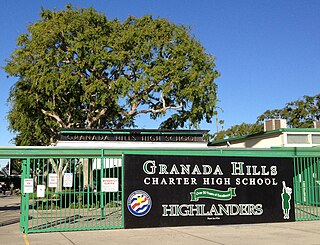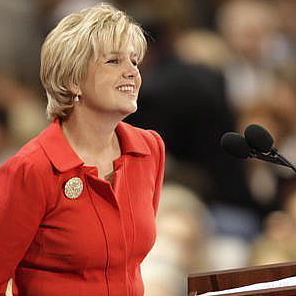Related Research Articles
School choice is a term for education options that allow students and families to select alternatives to public schools. It is the subject of fierce debate in various state legislatures across the United States.

Oregon State University (OSU) is a public land-grant research university based in Corvallis, Oregon. OSU offers more than 200 undergraduate-degree programs along with a variety of graduate and doctoral degrees through all 11 colleges. It has the seventh-largest engineering college in the nation for 2023. Undergraduate enrollment for all colleges combined averages over 32,000 while an additional 5,000 students are engaged in post-graduate coursework through the university. In 2023, over 37,000 students were enrolled at OSU – making it the largest university in the state. Out-of-state students typically make up over one-quarter of the student body. Since its founding, over 272,000 students have graduated from OSU. The university is classified by the Carnegie Classification of Institutions of Higher Education as an "...R1: Doctoral University," with "...very high research activity."

The George Washington University is a private federally-chartered research university in Washington, D.C. Originally named Columbian College, it was chartered in 1821 by the United States Congress and is the first university founded under Washington, D.C.'s jurisdiction. It is one of the nation's six federally chartered universities.

Charter schools in the United States are primary or secondary education institutions which receive government funding but operate with a degree of autonomy or independence from local public school districts. Charter schools have a contract with local public school districts or other governmental authorizing bodies that allow them to operate. These contracts, or charters, are how charter schools bear their name. Charter schools are open to all students, depending on capacity, and do not charge tuition. 7.4 percent of all public school students attended a charter school in the 2021–2022 school year.

DePaul University is a private Catholic research university in Chicago, Illinois. Founded by the Vincentians in 1898, the university takes its name from the 17th-century French priest Saint Vincent de Paul. In 1998, it became the largest Catholic university in terms of enrollment in North America. Following in the footsteps of its founders, DePaul places special emphasis on recruiting first-generation students and others from disadvantaged backgrounds.

The University of Houston System is a public university system in the U.S. state of Texas, comprising four separate and distinct universities. It also owns and holds broadcasting licenses to a public television station (KUHT) and a public radio station (KUHF).

In the United States, higher education is an optional stage of formal learning following secondary education. It is also referred to as post-secondary education, third-stage, third-level, or tertiary education. It covers stages 5 to 8 on the International ISCED 2011 scale. It is delivered at 3,931 Title IV degree-granting institutions, known as colleges or universities. These may be public or private universities, research universities, liberal arts colleges, community colleges, or for-profit colleges. U.S. higher education is loosely regulated by the government and by several third-party organizations.
This article is intended to give an overview of the education in Houston.

Lisa Graham Keegan is an American education reform advocate and the author of the parenting book Simple Choices.
Stride, Inc. is a for-profit education company that provides online and blended education programs. Stride, Inc. is an education management organization (EMO) that provides online education designed as an alternative to traditional "brick and mortar" education for public school students from kindergarten to 12th grade, as well as career learning programs. As of 2012, publicly traded Stride, Inc. was the largest EMO in terms of enrollment.
Charter schools in New York are independent, not-for-profit public schools operating under a different set of rules than the typical state-run schools, exempt from many requirements and regulations. Any student eligible for public schools can apply.
Charter schools in North Carolina are public schools operating under a different set of rules than the typical state-run schools. Though they are exempt from many requirements, charter schools are required to administer state standardized tests.
Charter schools operate with considerably more independence than traditional public schools. However, Massachusetts has two kinds of charter schools - Commonwealth Charters and Horace Mann Charters. Horace Mann charter schools differ from Commonwealth charter schools as they must be located within a school district. Both kinds of charter schools are free to structure their curriculum and school environment; for instance, many charter schools fit more instructional hours into a year by running longer school days and providing instruction on weekends and during the summer. Because few charter schools are unionized, they can hire and fire teachers and administrative staff without regard to the collectively bargained seniority and tenure provisions that constrain such decisions in most public schools. Although charter students made up only 2.9 percent of U.S. public school enrollment in 2008–2009, charter enrollment has grown rapidly and seems likely to accelerate in the near future. The growth of charter schools is an important component of the contemporary education reform movement's pursuit of accountability and flexibility in public education. Proponents see charter schools' freedom from regulation as a source of educational innovation, with the added benefit of providing a source of competition that may prompt innovation and improvement in the rest of the public system. At the same time, charter schools are controversial because, after a transition period in which the state provides subsidies, they receive a tuition payment for each enrolled student paid by students' home districts. In Massachusetts, tuition payments are determined largely by the average per-pupil expenditure in sending districts. Not surprisingly, therefore, public school districts are concerned about the revenue lost when their students enroll in charter schools.

Washington Initiative 1240 "concerns creation of a public charter school system" was an initiative that appeared on the Washington state general ballot in November 2012. Originally filed with the Washington Secretary of State on May 31, proponents and paid signature gatherers collected enough signatures to be certified for the ballot on July 25, making it one of the fastest initiatives ever to do so, at an estimated cost of more than $6 per signature. Proposed charter schools would receive public funding but not be governed by local school districts. An August 2012 financial impact study by the state Office of Financial Management estimated "an indeterminate, but non-zero, fiscal impact to local public school districts" and "known state agency implementation costs" of at least $3 million in the first five years. The initiative was approved by voters in November 2012.
Charter Schools USA (CSUSA) is a for-profit education management organization in the United States. It operates eighty-seven schools in seven states including sixty one charter schools in Florida. In 2019, Charter Schools USA managed charter schools enrolling approximately 70,000 students on a vendor operated school basis.

A charter school is a school that receives government funding but operates independently of the established state school system in which it is located. It is independent in the sense that it operates according to the basic principle of autonomy for accountability, that it is freed from the rules but accountable for results.
Greater Brunswick Charter School (GBCS) is a free, public charter school serving grades kindergarten through eighth located on 429 Joyce Kilmer Avenue in New Brunswick, New Jersey. The school has a Spanish-English bilingual program for grades K-4, and has plans to extend it through grade five.
New Jersey Minority Educational Development is an American non-governmental organization NGO that provides technical support to local, national, and international educational organizations through market research and innovative programming design services from early childhood to post-secondary education.
A charter management organization (CMO) is an educational organization that operates charter schools in the United States. Charter schools are public schools that operate independently of the local government school district.
An education management organization (EMO) is a term of art describing a for-profit entity that manages schools. It provides a distinction from charter management organization which is a non-profit manager of charter schools. The terms are often used interchangeably, with resulting confusion.
References
- 1 2 "NATIONAL ALLIANCE FOR PUBLIC CHARTER SCHOOLS". ProPublica. Retrieved 26 January 2018.
- ↑ "National Alliance for Public Charter Schools". Ballotpedia. Retrieved 26 January 2018.
- ↑ Ziebarth, Todd (March 2017). "Measuring Up to the Model: A Ranking of State Charter School Laws, 2017" (PDF). NAPCS. Retrieved 26 January 2018.
- ↑ "Estimated Charter Public School Enrollment, 2016-17" (PDF). NAPCS. Retrieved 26 January 2018.
- ↑ Kardish, Chris (October 2, 2014). "State Charter School Systems Ranked". Governing. Retrieved 26 January 2018.